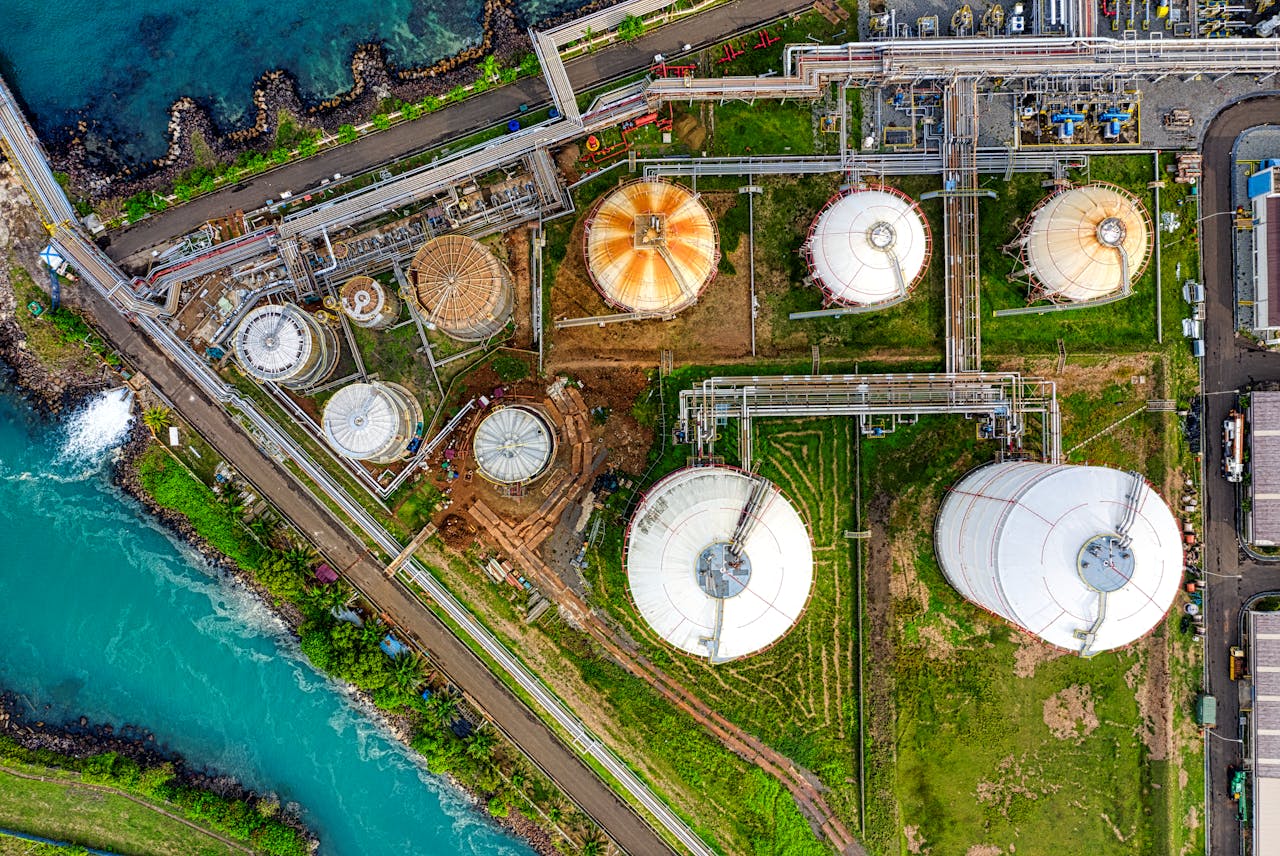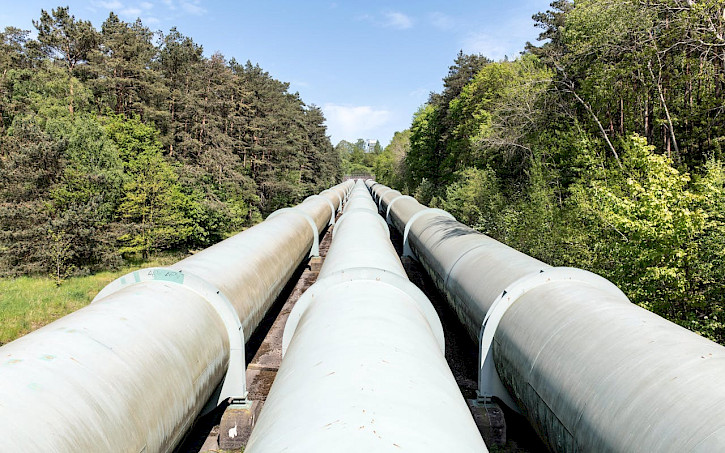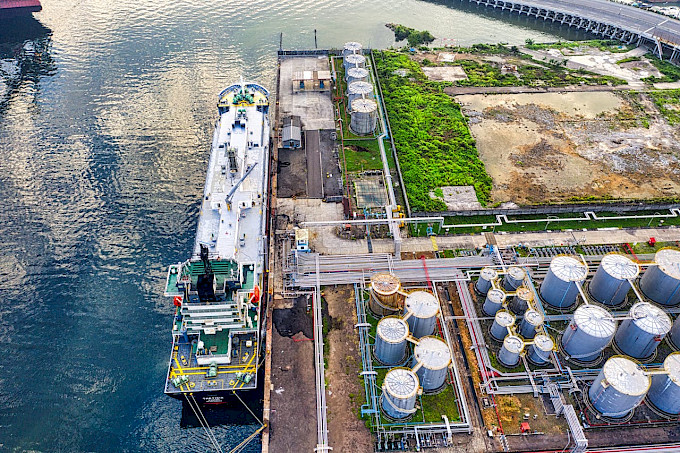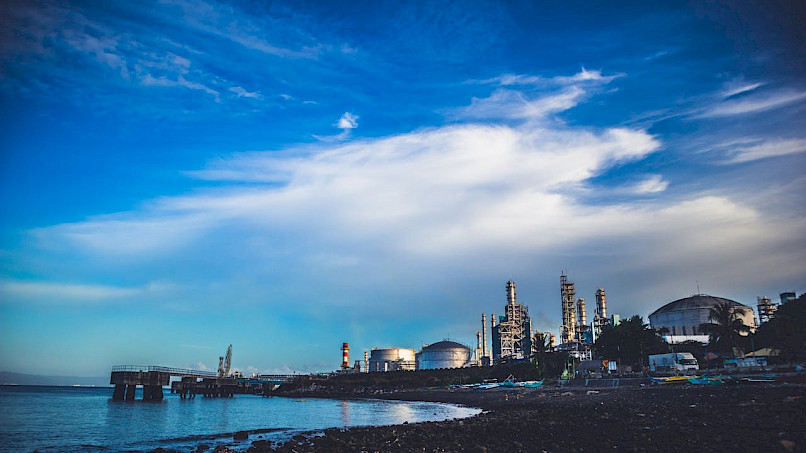
Safety First: Ensuring Integrity in Oil & Gas Pipeline Systems with Quality Fittings
Introduction
The oil and gas industry in India is a lifeline that powers the nation.
As of 2023, the total length of oil and gas pipelines in India is approximately 22,187.51 kilometers for natural gas pipelines and around 20,000 kilometers for oil pipelines. This extensive network is crucial for ensuring efficient transportation and distribution of energy resources across the country.
These pipelines play a crucial role in transporting crude oil, natural gas, and petroleum products from refineries to consumers. This intricate web of pipelines is vital for sustaining economic growth, ensuring energy security, and supporting millions of jobs across the country. However, with this vast infrastructure comes an immense responsibility: safety.
Pipeline integrity is non-negotiable. A single failure can lead to disastrous consequences—explosions, environmental damage, and loss of life.
According to the Comptroller and Auditor General (CAG), Indian Oil Corporation reported 113 major accidents during fuel transport between 2014 and 2019 alone. These incidents highlight the urgent need for robust safety measures in pipeline operations.
At the heart of these operations are pipe fittings—caps, couplings, flanges, and other connectors that ensure the seamless flow of hydrocarbons through pipelines.
These fittings are more than mere components; they are the guardians of safety, preventing leaks and maintaining the structural integrity of pipelines under extreme conditions.
The Role of Pipe Fittings in Pipeline Integrity

In the oil and gas sector, pipe fittings serve as critical components that ensure pipelines function effectively. They come in various forms:
- Caps: Close off the ends of pipes to prevent fluid escape.
- Couplings: Connect two pipes of the same diameter securely.
- Flanges: Allow for easy connection and disconnection of pipes while providing a robust seal.
These fittings are essential for maintaining pressure and flow within the system. A well-designed fitting can mean the difference between a leak-free operation and a catastrophic failure.
But why does this matter?
A study conducted by the Indian Oil Pipeline Incident Data group revealed that around 30% of pipeline failures in India were attributed to issues related to fittings and joints. In high-pressure environments where natural gas or crude oil is transported, even a minor defect can lead to significant incidents.
For instance, consider the tragic explosion in Andhra Pradesh in 2014 caused by a ruptured gas pipeline operated by GAIL. This incident resulted in 22 fatalities and numerous injuries, underscoring how critical quality fittings are to preventing such disasters. Investigations revealed that faulty fittings contributed significantly to the failure.
Moreover, as per reports from Maharashtra Natural Gas Limited (MNGL), there have been over 100 fire incidents linked to pipeline leaks in Pune alone over the last four years. These incidents often occur during construction activities when existing pipelines are inadvertently damaged due to negligence or lack of awareness about their locations.
In essence, without high-quality pipe fittings, even state-of-the-art pipeline systems remain vulnerable. They are essential safeguards against potential disasters that could have devastating effects on communities and ecosystems alike.
Importance of Quality Fittings

In the oil and gas sector, the significance of quality fittings cannot be overstated.
These seemingly small components—caps, couplings, flanges—are the unsung heroes that ensure operational efficiency and safety within pipeline systems. When it comes to transporting hydrocarbons under high pressure, the integrity of every connection is crucial. High-quality fittings help maintain optimal flow rates, prevent leaks, and reduce the risk of catastrophic failures.
A report from the Petroleum and Natural Gas Regulatory Board (PNGRB) indicates that substandard fittings have been a contributing factor in numerous pipeline incidents across India. In fact, about 30% of pipeline failures can be traced back to issues with fittings. This statistic underscores the vital role that quality fittings play in safeguarding not only the infrastructure but also the environment and human life.
Case Study: Major Leak Incident
Take the incident involving a gas pipeline operated by GAIL (Gas Authority of India Limited) in 2020. A significant leak occurred due to faulty couplings that failed to withstand operational pressures.
The resulting gas leak not only caused environmental damage but also led to an emergency evacuation of nearby residents. Investigations revealed that the couplings used were below industry standards, leading to calls for stricter regulations on fitting quality.
The financial implications were staggering; GAIL faced penalties exceeding ₹50 crore due to environmental violations and compensation claims from affected residents. This case highlights how investing in high-quality fittings can prevent costly incidents and protect both public safety and corporate reputation.
Case Study: Methane Emissions Prevention
One notable success story comes from a collaboration between Solon Manufacturing Co. and several oil operators in India focused on reducing methane emissions.
By implementing Solon Belleville Springs & Washers, these operators maintained leak-free seals even under high-pressure conditions. The results were impressive: a significant reduction in fugitive emissions—estimated at around 25%—and enhanced safety protocols across operations.
Operators reported not only compliance with new environmental regulations but also an improvement in their public image as environmentally responsible companies. The financial savings from reduced emissions penalties alone justified the investment in high-quality fittings.
Case Study: The Piper Alpha Disaster
The Piper Alpha disaster remains a cautionary tale for the oil and gas industry worldwide. On July 6, 1988, a series of explosions on this North Sea platform resulted in the deaths of 167 workers and caused billions in damages. Investigations revealed that poor joint integrity—specifically involving blind flanges—was a critical factor leading to the disaster.
The aftermath prompted sweeping changes in safety regulations and fitting standards across the industry. The lessons learned from Piper Alpha emphasized the need for rigorous quality assurance processes for all components used in high-pressure environments, leading to improved fitting standards globally.
Case Study: Successful Leak Detection Systems
In recent years, advancements in leak detection technologies have revolutionized how operators monitor pipeline integrity. Companies like TTK have implemented state-of-the-art hydrocarbon leak detection systems that utilize smart sensors and ultrasonic technology.
These systems have proven effective at identifying leaks before they escalate into major incidents. For instance, one operator reported preventing potential losses exceeding ₹10 crore annually by detecting minor leaks early on, allowing for timely repairs without significant disruption to operations.
The integration of these technologies not only enhances safety but also ensures compliance with increasingly stringent environmental regulations, showcasing how innovation can lead to safer and more efficient pipeline operations.
By focusing on the importance of quality fittings and highlighting real-world case studies, we can see how investing in superior components is essential for operational success and safety within the oil and gas industry. These stories serve as reminders that every detail matters when it comes to safeguarding our energy infrastructure.
Regulatory Framework and Industry Standards
In the oil and gas sector, the regulatory framework governing pipeline safety is crucial for ensuring safe operations and protecting the environment. In India, several key organizations and regulations play a pivotal role in this landscape.
Overview of Regulations Governing Pipeline Safety
The Petroleum and Natural Gas Regulatory Board (PNGRB), established under the PNGRB Act of 2006, is responsible for regulating the refining, processing, storage, transportation, distribution, marketing, and sale of petroleum products and natural gas. The PNGRB lays down specific regulations for pipeline safety, which include:
- Authorization Regulations: Entities must obtain authorization before laying or operating pipelines.
- Technical Standards and Specifications: These regulations cover safety standards for natural gas pipelines, ensuring that all infrastructure meets rigorous safety criteria.
In addition to PNGRB guidelines, the Oil Industry Safety Directorate (OISD) provides safety rules that must be adhered to during pipeline operations. The OISD's standards focus on risk management and emergency preparedness, ensuring that operators are equipped to handle potential incidents effectively.
Importance of Compliance with Industry Standards for Fittings
Compliance with industry standards is not just a legal requirement; it is essential for maintaining operational efficiency and safety. Standards such as those set by the American Petroleum Institute (API) provide frameworks for best practices in manufacturing and installing fittings. API standards cover various aspects, including:
- Material Quality: Ensuring that fittings are made from materials that can withstand operational pressures and corrosive environments.
- Testing Procedures: Establishing rigorous testing protocols to verify the integrity of fittings before they are installed in pipelines.
Adhering to these standards helps prevent failures that could lead to leaks or catastrophic incidents. In fact, companies that prioritize compliance often see a reduction in operational downtime and maintenance costs due to fewer incidents related to fitting failures.
Role of Organizations like API in Promoting Safety Excellence
The American Petroleum Institute (API) plays a vital role in setting industry standards that enhance safety across the oil and gas sector. With nearly 700 consensus standards, API provides guidelines on equipment design, operational practices, and safety management systems. These standards are widely recognized and adopted not only in the U.S. but also internationally.
API's influence extends beyond just creating guidelines; it actively engages with policymakers to advocate for regulations that protect public health and safety while promoting environmental stewardship.
The collaboration between API and Indian regulatory bodies like OISD ensures that local practices align with global best practices, fostering a culture of safety excellence in the industry.
Challenges in Ensuring Fitting Integrity

While quality fittings are essential for maintaining pipeline integrity, several challenges can compromise their effectiveness.
Common Issues Faced with Fittings
- Corrosion: One of the most significant threats to fitting integrity is corrosion. Exposure to harsh chemicals and environmental conditions can weaken fittings over time, leading to leaks or failures. A study found that approximately 30% of pipeline failures were attributed to corrosion-related issues.
- Fatigue Damage: Repeated stress from pressure fluctuations can cause fatigue damage in fittings. Over time, this can lead to cracks or complete failure if not monitored closely.
- Improper Installation: Many issues stem from improper installation practices. If fittings are not installed correctly—whether due to misalignment or inadequate tightening—they can become points of failure within the system.
Technical Complexities Involved in Fitting Selection and Maintenance
Selecting the right fittings involves understanding various technical specifications, including pressure ratings, temperature tolerances, and compatibility with transported fluids. The complexity increases when considering factors such as:
- Material Selection: Choosing materials that can withstand specific environmental conditions is critical. For example, using carbon steel fittings in corrosive environments without proper coatings can lead to premature failure.
- Maintenance Protocols: Regular inspections and maintenance are necessary to ensure fitting integrity. However, many operators struggle with fragmented documentation systems that make it difficult to track maintenance history effectively.
Costs Associated with Failures Versus Investments in Quality Fittings
The financial implications of fitting failures can be staggering. A single incident can result in cleanup costs, regulatory fines, and lost production time—often totaling millions of rupees. For instance, a major leak incident could cost an operator upwards of ₹100 crore, factoring in environmental remediation efforts and legal liabilities.
In contrast, investing in high-quality fittings might seem like a significant upfront cost but pays off by reducing the likelihood of failures and associated costs over time. Companies that prioritize quality fittings often report lower overall maintenance expenses and improved operational reliability.
By understanding the regulatory landscape surrounding pipeline safety and recognizing the challenges associated with fitting integrity, stakeholders can better navigate this complex environment while prioritizing safety and efficiency in their operations.
Future Trends in Pipeline Safety
Pipeline safety is evolving with the oil and gas industry. Innovations in materials, technologies, and monitoring systems are paving the way for a more secure and efficient future.
Innovations in Materials and Technologies
Carbon steel remains a preferred choice due to its exceptional strength and durability. Additionally, new materials like reinforced thermoplastic pipes (RTP) are gaining traction due to their superior flexibility and corrosion resistance.
The Role of Digitalization and IIoT
The integration of digitalization and the Industrial Internet of Things (IIoT) is transforming how pipeline integrity is monitored. Advanced sensors and IIoT technology enable predictive maintenance by analyzing data to forecast potential failures.
Predictions for the Future
The future of pipeline safety management will likely be characterized by increased automation and enhanced regulatory frameworks. We can expect smarter pipelines, enhanced regulatory compliance, and a stronger emphasis on sustainability
Conclusion
The critical importance of using reliable pipe fittings in oil and gas pipelines cannot be overstated. Quality fittings are fundamental to ensuring operational integrity and preventing catastrophic failures that can have far-reaching consequences for public safety and the environment.
As stakeholders in the oil and gas industry—be it operators, manufacturers, or regulatory bodies—there is a pressing need to prioritize quality fittings. Investing in superior materials and technologies not only enhances safety but also contributes to long-term cost savings through reduced maintenance and fewer incidents.
The evolution of safety practices within the industry is ongoing, driven by innovations in materials, digitalization, and regulatory advancements.
By staying informed about these developments and committing to best practices, we can collectively ensure that our pipeline systems remain safe, efficient, and sustainable well into the future.
Anggerik Laksana's Pipe Fittings Offerings
At Anggerik Laksana, we understand the critical role that high-quality pipe fittings play in ensuring the efficiency and safety of your petrochemical operations. That's why we offer a comprehensive range of fittings designed to meet the highest standards of performance and reliability.
Our product lineup includes:
- Elbows: Essential for changing directions in your piping systems.
- Tees: Perfect for distributing flow across multiple lines effectively.
- Reducers: Ideal for facilitating smooth transitions between different pipe sizes.
- Caps and Plugs: Designed to securely seal your systems.
- Return Bends, Crosses, Couplings, Stubends, O'Lets, and Nipples: Each fitting is crafted with precision to ensure optimal performance.
We prioritize quality through rigorous testing and adherence to industry standards, guaranteeing that every fitting we provide enhances the reliability of your operations.
To explore our full range of pipe fittings and discover how Anggerik Laksana can support your operational needs, visit our offerings here. Let us help you build a more efficient and reliable piping system tailored to your specific requirements.
